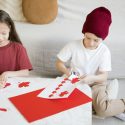The arts offer dyslexic individuals a powerful means of creative expression, allowing them to communicate, learn, and thrive in ways that traditional language-based approaches cannot always accommodate. Whether through visual arts, performing arts, or literary arts, dyslexic individuals can harness their creative talents to overcome challenges, express themselves, and explore their passions.
Visual arts, such as drawing, painting, and sculpture, provide dyslexic individuals with a nonverbal outlet for self-expression and communication. Through colors, shapes, and textures, they can convey thoughts, emotions, and ideas in ways that transcend language barriers. The process of creating art also encourages experimentation, problem-solving, and critical thinking skills, fostering cognitive development and self-confidence in dyslexic individuals.
Similarly, performing arts, including music, dance, and theater, offer dyslexic individuals opportunities to shine on stage and showcase their talents. The rhythmic patterns, movement sequences, and expressive gestures inherent in performing arts engage multiple sensory modalities, stimulating cognitive and emotional responses in dyslexic individuals. Whether singing a song, dancing a routine, or acting out a scene, dyslexic individuals can find joy and fulfillment in the performing arts.
Literary arts, such as poetry, storytelling, and creative writing, provide dyslexic individuals with avenues for self-expression and storytelling. While traditional reading and writing may pose challenges for dyslexic individuals, creative writing allows them to explore their imagination, craft narratives, and share their unique perspectives with the world. Through poetry, dyslexic individuals can play with language, rhythm, and imagery, expressing themselves in poetic forms that resonate with their experiences.
Incorporating the arts into dyslexia intervention programs can enrich learning experiences and promote holistic development in dyslexic individuals. By embracing creativity, imagination, and self-expression, educators and therapists can empower dyslexic individuals to discover their strengths, overcome challenges, and thrive in a world that celebrates diversity and creativity.
In conclusion, the arts offer dyslexic individuals a transformative means of self-expression, communication, and learning. By embracing the arts, dyslexic individuals can unlock their creative potential and forge their own paths to success and fulfillment.

Comments are closed